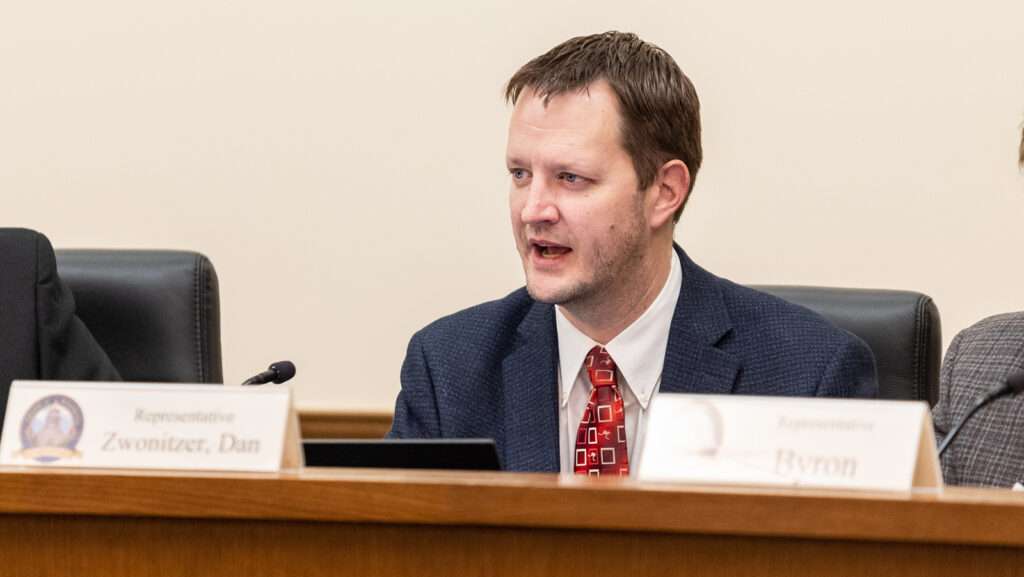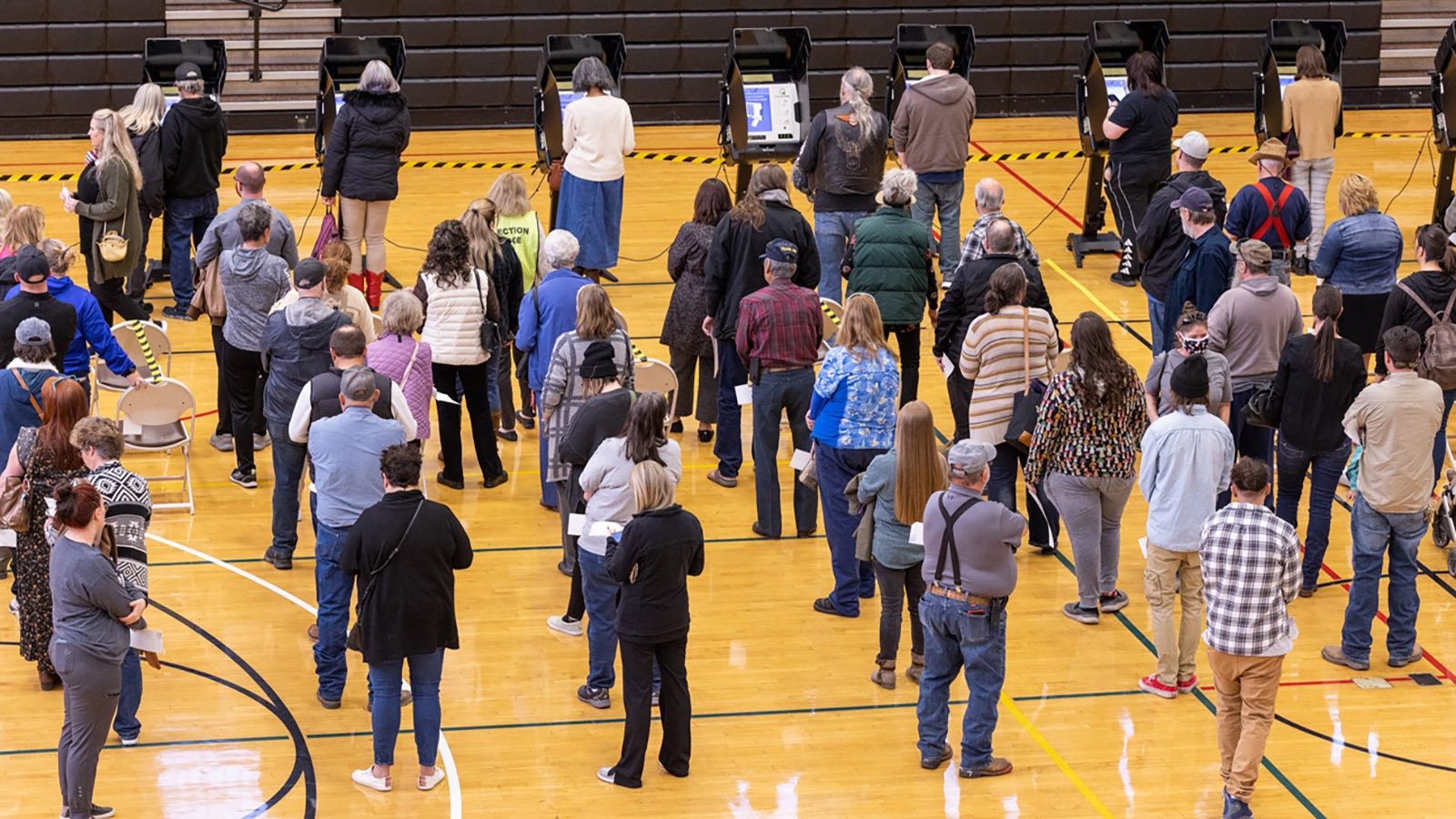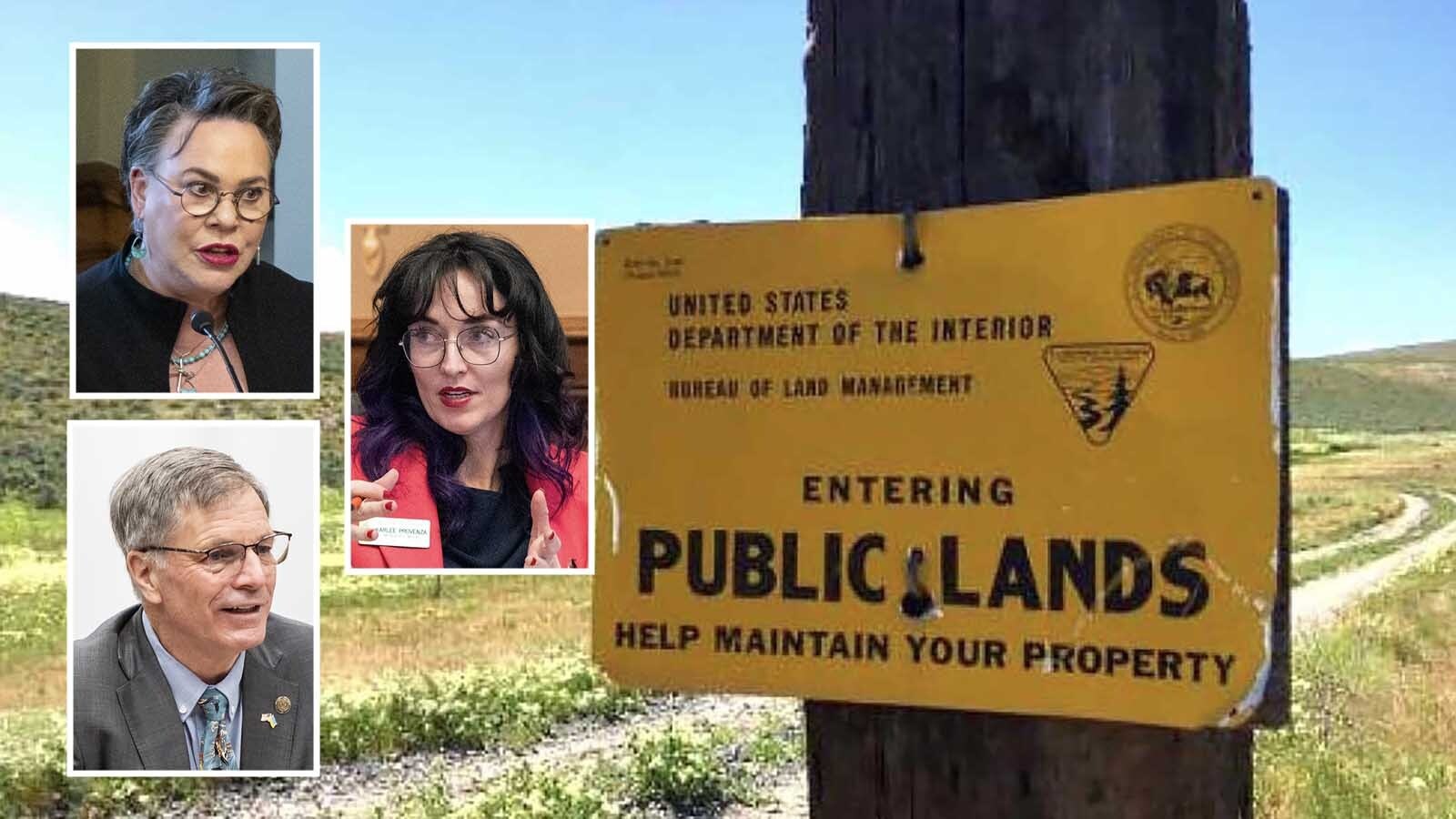An effort to restrict crossover voting in Wyoming was weakened Monday, but passed through the House Corporations, Elections and Political Subdivisions Committee.
House Bill 103 as originally written would have moved the deadline to switch political party affiliation to the beginning of the campaign filing period in mid-May. The bill was amended Monday to allow voters to change their party affiliation up to 45 days before the primary election.
This would align the deadline to change party registration to the date that the first absentee ballots are sent out.
Wyoming voters now can change their party affiliation up and until primary election day. Many conservatives have argued over the last decade that this allows non-Republican voters to unfairly influence primary elections.
Those who don’t want changes to Wyoming’s crossover voting rules say people should have the right to change party affiliation based on individual candidates running up to primary election day.
Rep. Jeremy Haroldson, R-Wheatland, lead sponsor of the bill, said his legislation isn’t partisan politics, but a “policy decision.”
“Do your ideologies and your morals support one party or another?” he questioned. “The two parties in question have very different viewpoints on many different things.
“Most people don’t say, ‘I’m going to go away from that platform I believe in to go to another platform.’ This isn’t about a popularity contest.”
The amended HB 103 passed with a 7-1 vote.
Related proposed legislation, House Bill 207, also passed on a 5-3 vote.
That bill, sponsored by Rep. Dan Zwonitzer, R-Cheyenne, takes a much more lenient approach to the issue of crossover voting, giving voters up to 14 days to change their party affiliation before a primary.
It also allows unaffiliated and voters from minor parties to change their affiliation on primary day.
“It’s a small step to say we’ve done something,” Zwonitzer said.
Is Crossover Happening?
The question of whether crossover voting happens enough in Wyoming at a level significant enough to impact the results of most elections was the focus of Monday’s committee debate.
In the Wyoming 2022 primary election, 94% of those who voted in the primary participated were registered Republican, while modern historical voting numbers show that Democrats make up about 20%-25% of the state’s voter base.
Gail Symons, an activist who runs the Civics307 blog, presented statistical evidence Monday she believes proves that although crossover voting did happen at significant levels in 2022, it was an “anomaly” compared to prior years driven by the highly contentious nature of the U.S. congressional race between former congresswoman Liz Cheney and U.S. Rep. Harriet Hageman.
She pointed out that only 846 Republican voters didn’t cast a vote in this race, while races for governor, secretary of state and superintendent of Public Instruction had undervotes ranging from 7,626 to 25,472.

By The Numbers
Of the 169,288 Republican voters in the primary, 9,181 changed party registration from Democrat to Republican, while another 6,253 changed from unaffiliated to Republican. This made up about 9% of total voters in the Cheney-Hageman race.
Although Hageman won by a blowout margin of around 38% of the vote, if she had been a less popular candidate, crossover voting could have played a larger role in the race.
There were 3,307 Democrats who crossed over to vote as Republicans then switched back to Democrat after the primary election and 531 unaffiliated voters who did the same.
There were only 12 Republicans statewide who took a similar action.
Symons went on to say that crossover voting played a much smaller role in previous elections in the state.
In 2020, a combined 2,057 voters changed party registration from unaffiliated or Democrat to Republican, while 1,857 Republicans and unaffiliated voters changed their party affiliation to Republican.
“Voting is driven by candidate interest, not partisan shenanigans,” Symons said.
She also pointed out that between 2020-2022, the total number of registered Republicans increased by 65,000 from 2020 to 2022, with a decrease in Democrats of about 13,000.
Therefore, of the 65,000 new Republicans, only 13,000 could definitely be considered crossover voters, she said. Overall participation in the 2022 primary also drastically increased from 2020. Around 73% of registered Republicans voted in the 2022 primary.
“It’s occurring, but at very low levels,” she said. “It’s not changing the results.”

Apples And Orages
Cheryl Aguiar, a Hot Springs County Republican Party committewoman, considered the same data Symons did, but came to a different conclusion.
She found it significant that 8,201 Democrats cast ballots in the 2022 primary, compared to 22,000 in 2020 and 19,000 in 2018.
“When they crossed over to vote in my primary, what they’re doing is essentially choosing the most moderate of the Republicans,” Aguiar said. “I can’t blame them, they are a minority. What they are saying is they’re trying to vote for the best Republican candidate for them.”
Aguiar and a few other Republicans have started an effort to bring the issue directly to voters through a ballot referendum that changes the voter registration deadline to the beginning of the filing period.
She warned members of the committee that if they don’t pass legislation that meets their desire to eliminate crossover voting, they will get it done through the ballot initiative.
“We’re done with this,” Aguiar said. “If you don’t pass it, we will.”
Campaign Filing
There were three bills proposed on the topic of crossover voting Monday. House Bill 141, sponsored by Rep. Barry Crago, R-Buffalo, was a mirror bill to HB 103 and was given little attention and no vote.
Secretary of State Chuck Gray spoke in favor of Haroldson’s bill and any legislation that cuts off changes in party registration to at least the end of the campaign filing period.
The timing of the campaign filing period is a major sticking point for those who want to restrict crossover voting, as they believe many voters make their decisions whether to crossover upon seeing who is running for election, rather than making a blanket commitment to one particular party.
In Wyoming, where Republicans hold an overwhelming majority, the Republican primary is where many of the state’s most influential and closest races take place.
“It dilutes our primary system,” Gray said. “It creates incentives for people who do not share the party’s values.”
Gray spoke against Zwonitzer’s bill, House Bill 207, saying it doesn’t go far enough. A motion amending HB 207 to a 45-day cutoff failed.
Party Affiliation
Symons warned members of the committee that shutting down crossover voting will lead to people permanently registering as Republicans even if they vote Democrat on a consistent basis in general elections.
“Be careful what you ask for,” she said.
Members of both sides spoke positively about the idea of institution party caucus elections in Wyoming.
Caucus elections for qualifying open primary elections involve political party members holding a meeting to nominate candidates for the primary. Under the caucus format, although a party nominee is designated on the primary ballot, it does not prevent other candidates from associating with that party unofficially in the primary election.
The top vote-getters from the primary, no matter their party, move to the general election.
“One of the beauties then is all the unaffiliated can be unaffiliated, stay unaffiliated, and still have a say in which two candidates they get to vote for in the general,” Symons said.
What the more conservative advocates may have in mind is a caucus that eliminates the primary election altogether, requiring those who want to nominate a candidate for their party in the general election to attend the caucus assembly.





